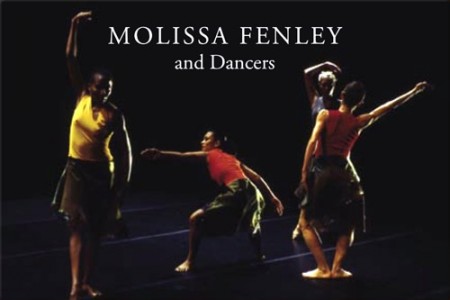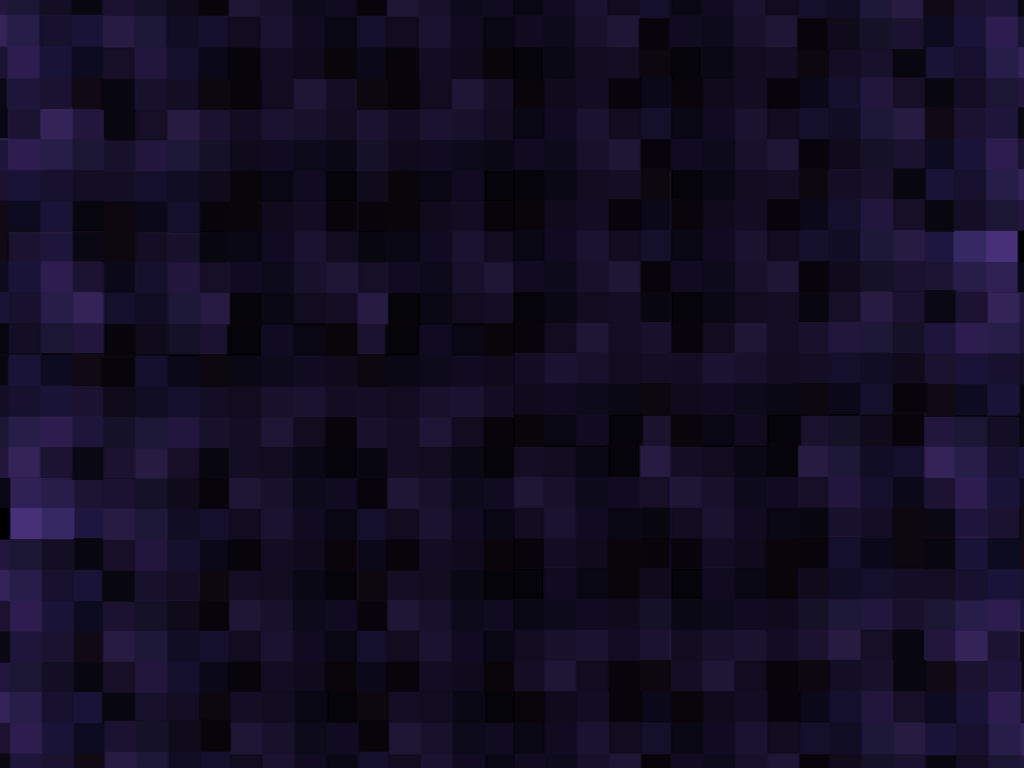The Dance Insider Interview, 9-14: Molissa Fenley
"You can say, 'That's a Fenley movement.'"
Philip W. Sandstrom, The Dance Insider
© 2005 Philip W. Sandstrom
September 14, 2005
 Photo © Julie Lemberger |
I interviewed Molissa Fenley September 6 at the Paradise Cafe in New York City, after observing a rehearsal of "Patterns and Expectations," "Desert Sea," and "Lava Fields," the three dances being presented by Molissa Fenley and Company Thursday through Sunday at Joyce SoHo. We weren't strangers to each other; I'd designed the lighting for two Fenley shows at Dance Theater Workshop, "Energizer" in 1980 and "Eureka" in 1982.
Philip W. Sandstrom: "Patterns and Expectations" is the first piece in your new show, with music by Fred Frith. I notice that you were using a recording of a live session; is he playing live for the performances? How is the dance structured?
Molissa Fenley: No. It's a work-in-progress that will premiere at Mills College in the spring; there he will be performing the score live. Basically, the structure is patterns get set up and then they change, yet something is always off, it's never quite right; that's part of setting up the patterns and altering the viewer's expectations. It's still a work-in-progress.
PWS: In this piece more than any of the others, the dancers, when facing each other, exchange a smile or a look; it's a very warm human quality that is enjoyable to observe. Is that planned?
MF: I always like that in my work. I think it's always been there.
PWS: Tell me about "Desert Sea," the second dance on your program; what is a desert sea?
MF: "Desert Sea" was made for the Repertory Dance Theatre group in Utah. It was made for eight dancers and I've reconfigured it for my present company of five. A lot of the imagery in the dance is derived from the Navaho weaving in the area where RDT operates. This area, called Four Corners, where Utah, Arizona, Colorado, and New Mexico converge is primarily Navaho tribal land. The Navahos see their blankets as a protective shield on the land and on the body. As for the title, looking back in geological time this area was the base of an inland sea; now of course it's a desert, so that's what spawned the idea of the "Desert Sea" title. The piece is geometrically oriented using the Navaho idea of the spirit mind; no blanket can be completely symmetrical because perfection is not a human trait, so there must be errors in the weave. The fact that the dance has five dancers already skews the work toward asymmetry; even when the dancers are working together, say as a pair, there will be moves that are slightly off from each other to reinforce the feeling of asymmetry. The music is by Lou Harrison, from "1942 Canticle #3," an intensive percussion piece.
PWS: It has a Southwestern Balinese sound or feel to it.
MF: Kind of but not so much Balinese as it is more American Indian; it's not quite so Pan-Pacific as it is Americana in a way. The movement study for this piece is drawn from the one-time piece I did for Meredith Monk's show at Danspace Project using Meredith Monk music. "Desert Sea" is in no way the same piece as the Meredith piece but it does contain the origins of the movement vocabulary for the dance that became "Desert Sea"; in a way it was my research.
PWS: The four to one and three to two format of dancers working together or apart that you utilize in this dance, how does that vary from what you've done in the past?
MF: I like the idea of having phrasings that radiate across the stage, with one dancer doing something and another dancer picking up on that but it's slightly different, slightly askew. I like placing four dancers against one dancer, and three against two, as you just mentioned -- I like groupings that are constantly shifting. "Desert Sea" has that: Each dancer is very individualist and has equal weight, each dancer is seen in light of the other four in different ways as a result of the constant shifting. I also like that as a rhythmic reality. Things are together and then they shift and change. It's constantly moving -- as soon as something is set up it becomes something else. In terms of how it differs from my very early work, I think that the dynamic-ism of that work, the ongoing-ness, and the sense of continuousness that was a hallmark of my earlier period is still there, but it's modulated in different ways with dynamics that are constantly changing.
PWS: In the very early days you worked with charts and exact counting. How does that fit in with what you are doing now?
MF: This work is not counted at all.
PWS: Oh? But all three of these pieces fit very well with the music.
MF: I know; that's because I made them that way. I made the dances that way intuitively rather than counted. Sometimes when working with a new group of dancers I'll put a count to the work but later when we're well into the piece I don't keep that count.
In this particular program there aren't very many sections that are counted. We have sections that were counted in rehearsal, but as we do it more and more we stop counting. I'm very interested in having dancers figure out how to keep together. There's one organization or grouping of counts that goes 7,6,5,4,3,7, those being phrases, and that counting is in the dance. Another section has five measures of three and that's in the dance, but these phrases, as we do them, eventually become more of the body counting rather than something that's metrically perfect every time.
PWS: So how do the dancers keep together? Do they guide on the person who is furthest downstage?
MF: It shifts. For example, in the 7,6,5,4,3,7 section, if you're doing a seven, there're four different phrases of that configuration, with dancer #1 doing phrase A, dancer #2 doing phrase B.... They know each other's movement well enough that if I'm doing a seven and someone else is doing a seven, we're staying together in the seven-ness of the count. So as you look across the stage you can see who's too fast or too slow. It's a loose rhythmic structure that allows individuality to come into play but it involves some split-second decision-making as to what is the real tempo. Also, the dancing tempo is often not one with the music tempo. It's really like we're a whole other orchestra.
PWS: That certainly explains why, although in all three pieces in the rehearsal I saw the dance and the music blended, I could not figure out how you were counting them.
MF: Like I said, some sections are counted but in the doing of it the dancers might be counting to themselves like a mantra, to keep coordinated, but the counting is not rhythmically correct. It's not in the same rhythm as the music. It will be in the tempo frame but not on necessarily on the tempo.
PWS: In making "Lava Field," actually in the making of any of these pieces, where do you start?
MF: "Lava Field" started with hiking on lava fields in Hawaii and experiencing their very bare and desolate nature. There are two different kinds of lava flow: 1) pahoehoe, a twisted and rope-like texture, very convoluted; and 2) a'a, a fat and crinkly flow that travels quite quickly, up to 25 miles per hour. Both of these types of flow provided me with textural suggestions for movement and placement of the dancers on the stage. The dancers are often interweaving, holding hands, and making different group configurations.
PWS: It has a folk dance quality to it.
MF: It's interesting that you say that, because people in Hawaii believe there are mythological creatures called the Night Marchers who are the ancestors who parade on the lava fields at night as protectors of the fields. It's said that if you're not part of the ancestry of Hawaiian culture, and you're on the lava fields at night, these creatures may harm you. I was reading a number of these stories and used these ideas in a part of the dance that I call the marauding section. These ideas suggest a certain type of movement, and I try to make each piece very specific in its vocabulary.
PWS: Do you work alone in the studio first before you work with the dancers?
MF: Yes, I get everything choreographed, all the phrases are made, and then I figure out how to put them on the dancers. The spacing comes with that; we make decisions about spacing when we get into the studio. The vocabulary is intact -- I never ask them to improvise or provide some of the phrase. The one thing that is very interesting about a choreographer who uses a very particular movement vocabulary is that it becomes an intrinsic signature; you can say, "That's a Fenley movement." I'm not interested in having that diluted; I'm interested in having the work "translated" by each dancer but not added to or altered.
PWS: I must say it did bring a smile to my face every time I recognized a signature movement.
MF: It's a language I've been working on for 28 years. I'm trying to make it grow and yet there are always elements present that are recognizable as my vocabulary.
PWS: For this show you have five dancers, but only use the fifth in one of the three dances; have you thought about replacing yourself with her in one of the four-dancer pieces?
MF: No, I love it, I love dancing!
Salone at Judson Memorial Church
March 17, 2026
Click here for details
Geologic Moments



